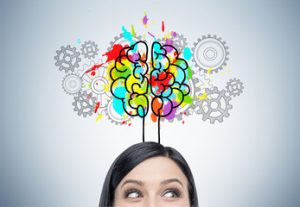
For many years, scientists believed that the brain was incapable of neuroplasticity. But recent research has proved that this is a myth and the brain is indeed capable of forming new connections and relearning lost functions. This has been a breakthrough finding that has given hope to patients suffering from neurodegenerative conditions such as Alzheimer’s and Parkinson’s disease.
What is neuroplasticity?
Neuroplasticity is the ability of the brain to reorganize and form new connections to make up for lost functions or adapt to changes in the environment. It can also be referred to as brain malleability. When neuroplasticity occurs, healthy neurons reorganize themselves and take up the roles of damaged neurons. This has been proven practically in instances where a person who had lost functions such as speech or balance is slowly able to regain them with some stimulation and assistance.
How does neuroplasticity happen?
This usually occurs through axonal sprouting. Undamaged neurons can sprout nerve endings that connect to other undamaged neurons in the circuit. This way they are able to form new connections and relearn functions that were lost when some neurons were injured or severed. For this to happen, the brain has to be stimulated.
The role of Brain-Derived Neurotrophic Factor (BDNF) in Neuroplasticity
BNDF plays a critical role in allowing undamaged neurons to sprout nerve endings and connect to other neurons. It follows that an abundance of BDNF means a greater capacity for the brain to reorganize and form new connections.
How to boost neuroplasticity
1. Supplement your diet with magnesium and Choline
Magnesium and choline play a crucial role in enhancing the neuroplasticity potential of neurons. One study conducted on mice showed that magnesium increases plasticity of neurons in the visual cortex. Another study showed that patients with Alzheimer’s have lower magnesium levels in their brains.
Choline on the other hand is useful in the formation of the neurotransmitter acetylcholine. Choline has been shown to stimulate brain plasticity following a stroke. Egg yolks are a rich source of choline, alternatively you can buy choline supplements.
2. Eat fish
Fish and especially sea fish are loaded with omega 3 fats. Some studies have shown that omega 3 stimulates neurogenesis as well as neuroplasticity.
3. Eat turmeric
Turmeric contains a compound known as curcumin that improves neuroplasticity. You can either eat turmeric or buy curcumin supplements.
4. Exercise frequently.
Moderate exercise stimulates the production of BNDF which is vital for neuroplasticity. A number of stroke patients have been able to regain moderate function after engaging in routine aerobic exercises.
5. Practice Intermittent Fasting
Practice intermittent fasting for a few hours each day and restrict your eating to a set number of hours. Currently, intermittent fasting is all the rage now for a number of good reasons. While many people are trying this so that that they can lose weight, science is revealing that it can also help in triggering neuroplasticity.
When fasting intermittently, many people adopt a 16/8 strategy where they fast for 16 hours and eat for 8 hours. Another model is to fast for two consecutive days and eat for the next five and then resume the two day fast. It is believed that this period of starvation triggers the release of leptin hormone which signals neurons to release more energy. The increased energy levels are useful for stimulating neural connections and triggering neuroplasticity.
6. Sleep
Some studies have revealed that adequate sleep is necessary for neuroplasticity to happen. When you sleep, the brain is able to allow for axonal connections to form and the process of brain reorganization to take place. It is recommended that you attempt 7-8 hours of sleep daily, especially when you are trying to recover from brain injury or the onset of degenerative disease. It is also helpful to stick to a routine or sleeping pattern where you go to bed at almost the same time every day.
Why is neuroplasticity important?
Life expectancy is increasing due to improved quality of life and access to better healthcare across the globe. With this comes a greater burden of chronic diseases, among them are degenerative diseases.
Neuroplasticity allows people who have lost some important cognitive functions the chance to recover and be able to lead a near normal life again. We are not yet there with neuroplasticity, but scientist are working hard to tap into the brain’s potential to recover from injury in the hope of finding a cure for degenerative diseases.
